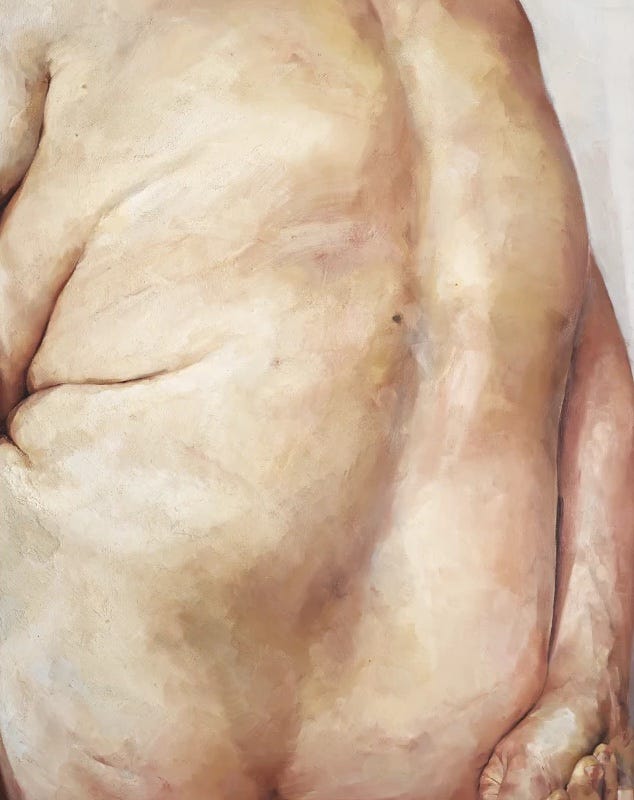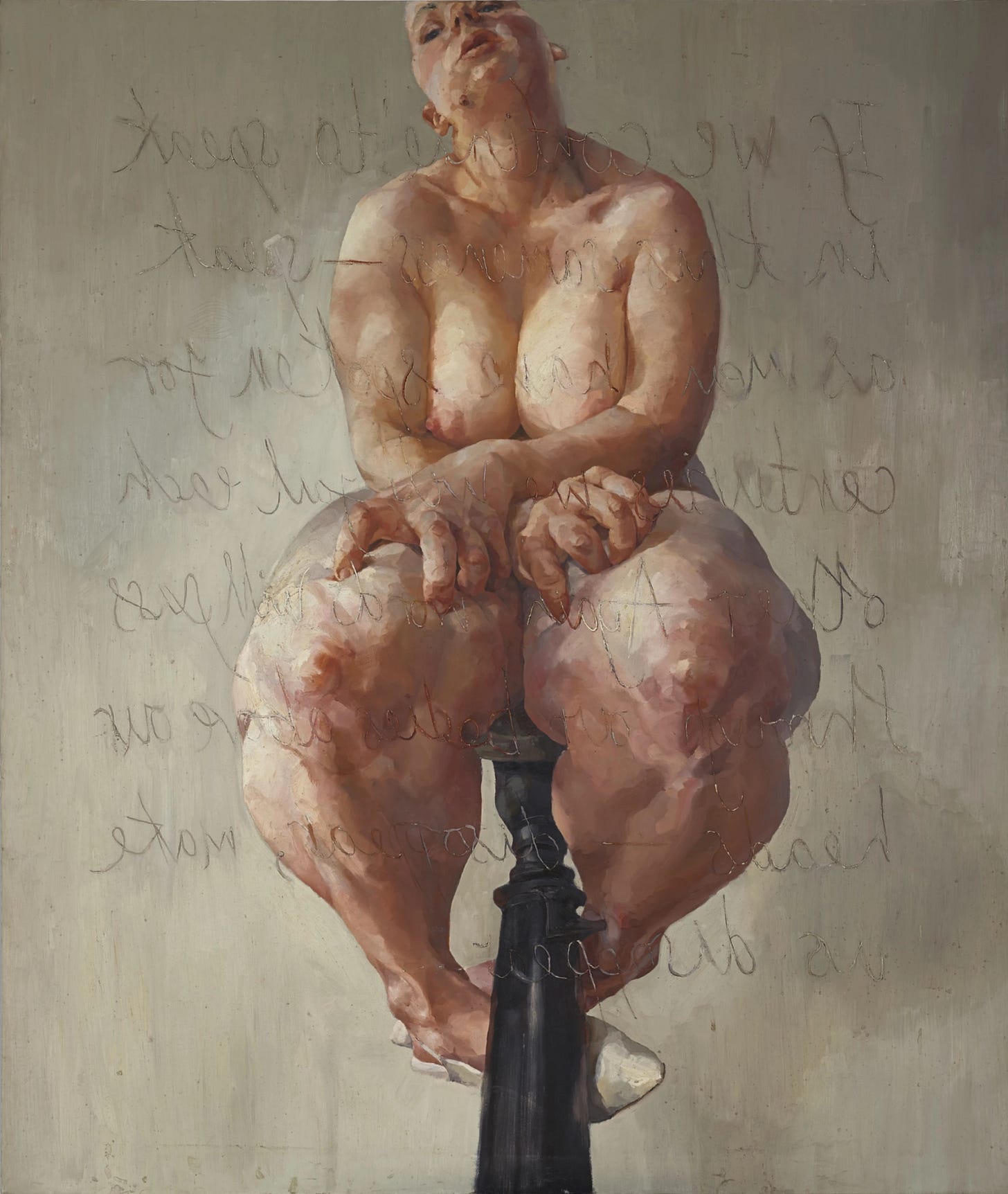Expressions of the Skin
On the language of the body, messages from the flesh & one year of Mother Tongue Tied!
It was the one-year anniversary of Mother Tongue Tied at the end of June. I made a little video with highlights of the past year for Instagram, including the photos so many wonderful friends and readers sent me. (The Insta version is accompanied by music if you want to watch it in its original format there.) As I always say, it is an honour to be read with compassion and care and to know someone is sharing their precious time with my work. Thank you to everyone who bought the book, shared it, recommended it, sent me a photo, told me it meant something to you, asked your local bookshop or library to stock it, anything and everything including reading and subscribing here. It all means so very much. Thank you! If you read MTT, liked it and have a minute, please leave a review on Goodreads or the other place so others can hopefully find it, or share or heart this newsletter, that also means a lot. Paperback news with some updates to the book coming very soon.
I wish I could write something more about the highs, lows and realities of book publishing, but the feelings are all over the place, especially as everything was intertwined with a heavy personal year. But I often think about something
wrote a few months after her debut came out:Your Book is the Holy Grail, The Peak of Mount Everest, The Moon Landing and for everyone else in the world, it’s Just A Book.
Both things are true and it is simultaneously humbling, but also something to be immensely proud of.
And now, the language of the body and expressions of the skin.
As I stood in line with my children for tickets to the Jenny Saville show at the National Portrait Gallery recently, a volunteer came up to us to ask if she could help. We began the ubiquitous conversational dance: she asked if we were visiting for the day, I said no, we live in London. She apologised for assuming my accent meant I was a tourist (no need), looked at my children and said the exhibition had “some things” that were not suitable for younger viewers. “Nudes?” I asked, adding that my children are lucky to see art often and nudes are not a problem for us. She had yet to see the show, she said, and was not sure, but was briefed about an advisory warning. The material is contained to one room, she added, so easy enough to bypass if I did not think it was suitable for my children.
It was our turn to purchase tickets and the woman behind the desk struck up a conversation in Polish after hearing me speaking with my kids. She pulled out the vague advisory info sheet and I asked again if she knew what it was they were referring to. “The other woman said I could easily avoid it as it is contained to one room,” I said. “I have only rushed through the exhibit, but I can’t see how you could avoid these paintings as they are right there, in the main part,” she replied in Polish. And then, in English, whispered: “let me put it this way: soft pornography.”
As our tickets were scanned at the entrance, I decided to ask one more person for their take on what it was that might offend or upset in the exhibit. She was not sure either and pulled out the same advisory sheet. “If you want to avoid the more sensitive subjects, it is in the room to your right,” the young woman read off the laminated paper. By then, my children were terrified. I also started to worry I was taking them to see something that would give them nightmares and be therapy content in a decade or two: “When I was 8, my mom took us to see…” I was also confused: was everyone referring to the same thing, or were there multiple, and of course highly subjective, interpretations of something that may offend or upset.
As we entered, I asked my kids to veer off to the gift shop for a moment and I would check what was in the mysterious room to the right, just in case. It was a collection of Saville’s large-scale paintings of faces close-up, depicting themes of plastic surgery and disfigurement. If you looked quickly, as my children often do, the thick brushstrokes took on an abstract quality, colours blended and the scale of the paintings made it so the focus was on brilliant colour and texture. If someone was not familiar with the themes, the work was not obviously upsetting, at least not for me1. As for that “soft porn”, it was a few paintings of a couple, nude, their legs intertwined but hardly my definition of something that had to be avoided. But again, I know people differ in their interpretation, and what that they think children should see or not see — perhaps a conversation for another time considering what the same people are OK with…
I wrote about Saville’s motherhood depictions here and if you want to hear more about her work, I recommend this podcast by
who I happened to spy at the exhibition the same day we were there. What I want to discuss in this newsletter, and something I can’t stop thinking about since seeing the show, is Saville’s portrayal of skin, or, as has been written, perhaps hundreds of times about the artist, her depiction of “flesh”:Jenny Saville’s voluptuous, rippling folds of flesh explore the living, breathing human experience. On one hand she is a painter’s painter, who relishes in the messy, smeary liquidity of oil paint, but she also draws parallels between the sensuality of painting and the perceptions of seeing, touching and living in human skin, as it squashes, flattens, wrinkles and overflows.
In the gift shop, I picked up a pocket-sized book on drawing anatomy, specifically fat and skin folds, and read the back:
The typical approach to teaching anatomy and the sketching of the human form most often focuses on the skeleton and musculature. What often goes ignored is the skin itself—how it moves and the expressions it creates as the body changes positions.
I thought about how I would draw the fold of skin around my C-section scar, the part of my body that birthed my daughter: the language of life and motherhood. I considered the skin on my upper arms and the flesh of my abdomen, a maternal legacy of sorts passed on by women in my family. I have been so critical of the way my skin squashes, flattens, wrinkles and overflows so many times in my life, yes perhaps more now in middle age, but in reality, even when I was much younger.
Keep reading with a 7-day free trial
Subscribe to Motherlingual to keep reading this post and get 7 days of free access to the full post archives.





